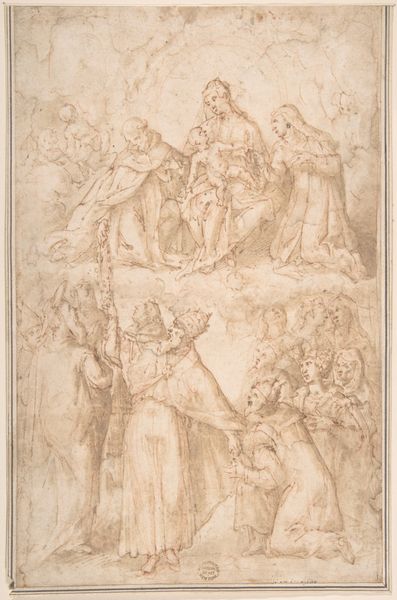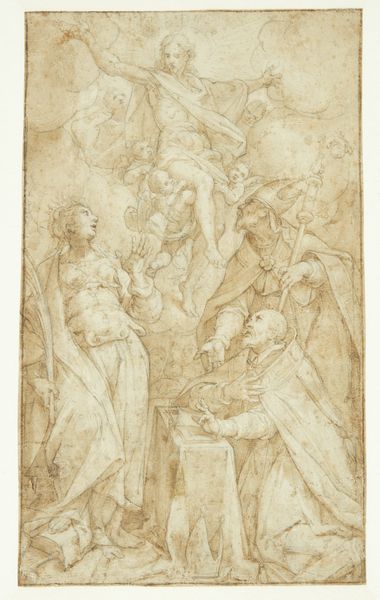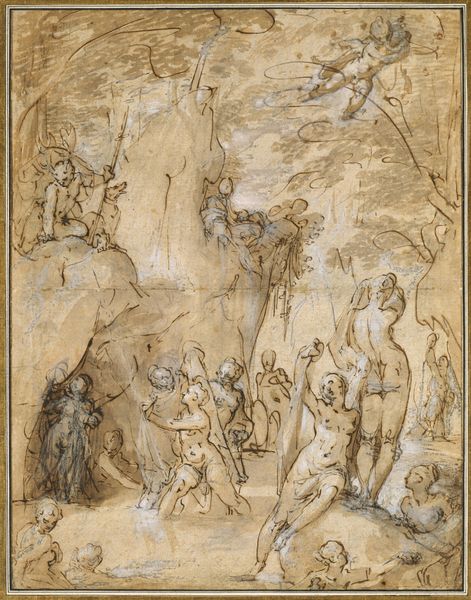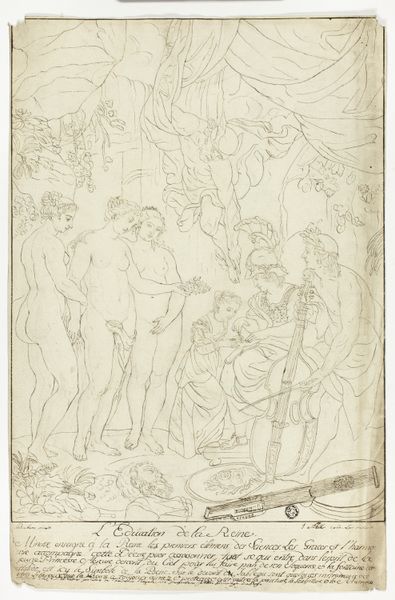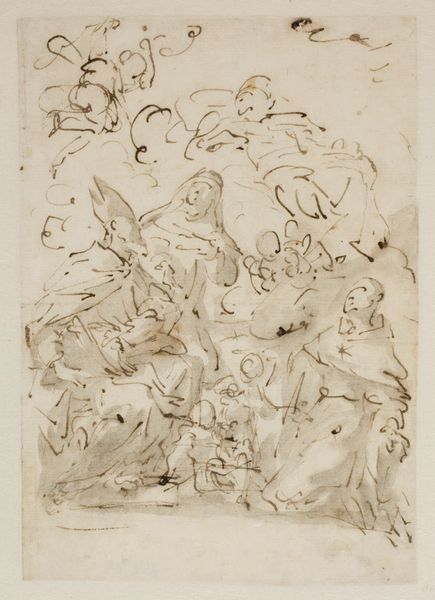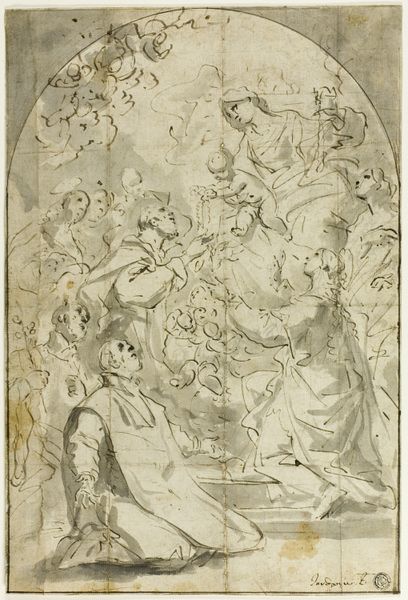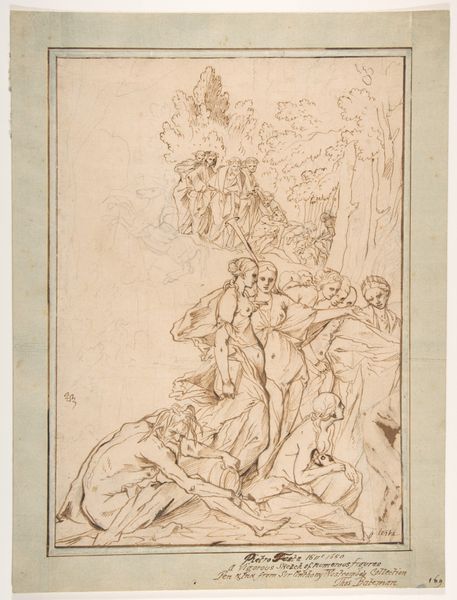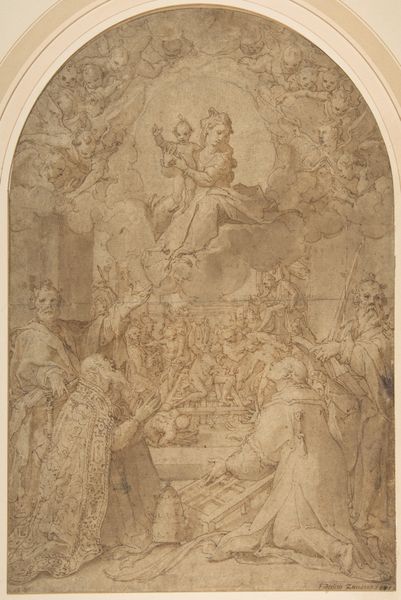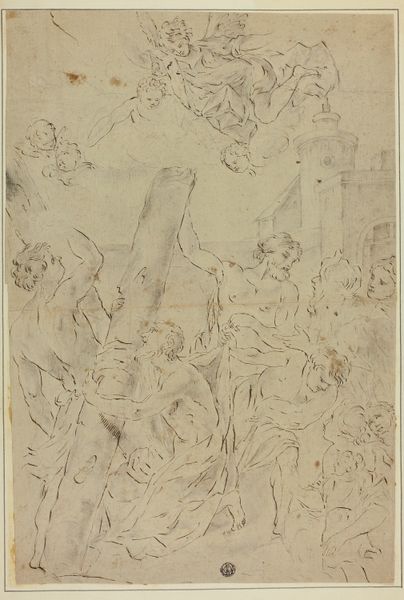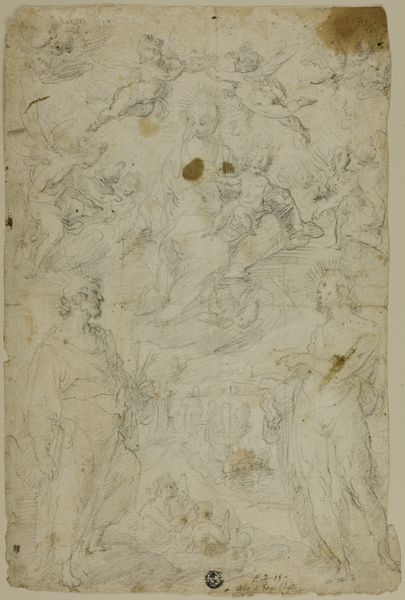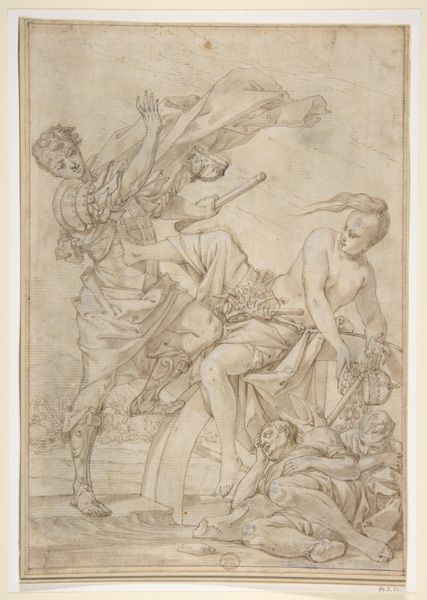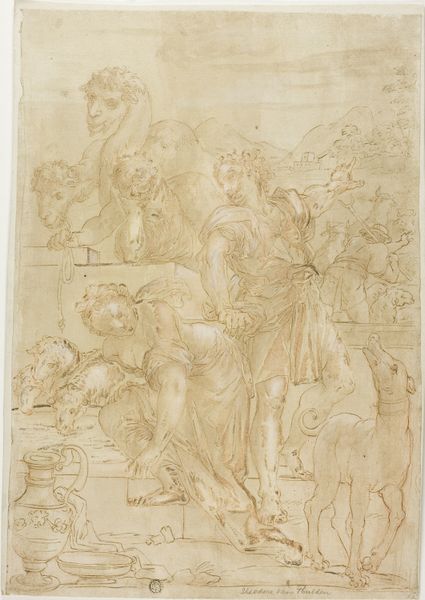
drawing, print, paper, ink, chalk, pen, charcoal
#
portrait
#
drawing
#
narrative-art
#
baroque
#
ink painting
# print
#
classical-realism
#
charcoal drawing
#
figuration
#
paper
#
charcoal art
#
ink
#
chalk
#
pen
#
charcoal
#
history-painting
Dimensions: 339 × 250 mm
Copyright: Public Domain
Curator: At first glance, this work conveys an energy that’s both frantic and elegant. There's a definite emphasis on line and the human figure in a rather dynamic composition. Editor: This drawing is titled "Figures at an Altar or Classical Sacrifice." It's an intriguing piece from Paolo Pagani, currently held here at the Art Institute of Chicago. While the date is unspecified, the style certainly suggests the Baroque era with distinct classical influences. Pagani employs pen, ink, chalk, and charcoal on paper, achieving a nuanced tonal range. Curator: Yes, the monochromatic palette really streamlines the action, which could read as chaotic if rendered with high color contrast. The strategic use of negative space around the gesturing figures in the center adds to this energetic quality. Editor: The subject matter resonates with its time. Classical themes experienced renewed interest, and depictions of sacrifice were loaded with cultural meaning, often commissioned by patrons seeking to project power or piety. You'll notice the careful staging, directing the eye to a focal point at the altar. Curator: Note also the loose, gestural lines and varied weights. It lends an immediacy and emotional intensity that invites us to consider the ritual being portrayed. The faceless figures in the background heighten the tension, forcing the eye to the altar. Editor: I agree. The sketch-like quality indicates this might be a preparatory study for a larger composition, possibly intended for a wealthy patron or ecclesiastical institution. Examining Pagani's broader artistic production might clarify its function within his practice and his era's visual culture. Curator: I am mostly taken by its expressive freedom and sense of dynamism, that Pagani evokes with such restrained means. It's as if we have stepped into the scene right before the critical event. Editor: Indeed, art like this gives us access to not only artistry but a moment in time where religious beliefs and social structures deeply influenced aesthetic tastes and the demand for a narrative of sacrifice and perhaps redemption. A fascinating blend of form and historical purpose.
Comments
No comments
Be the first to comment and join the conversation on the ultimate creative platform.

